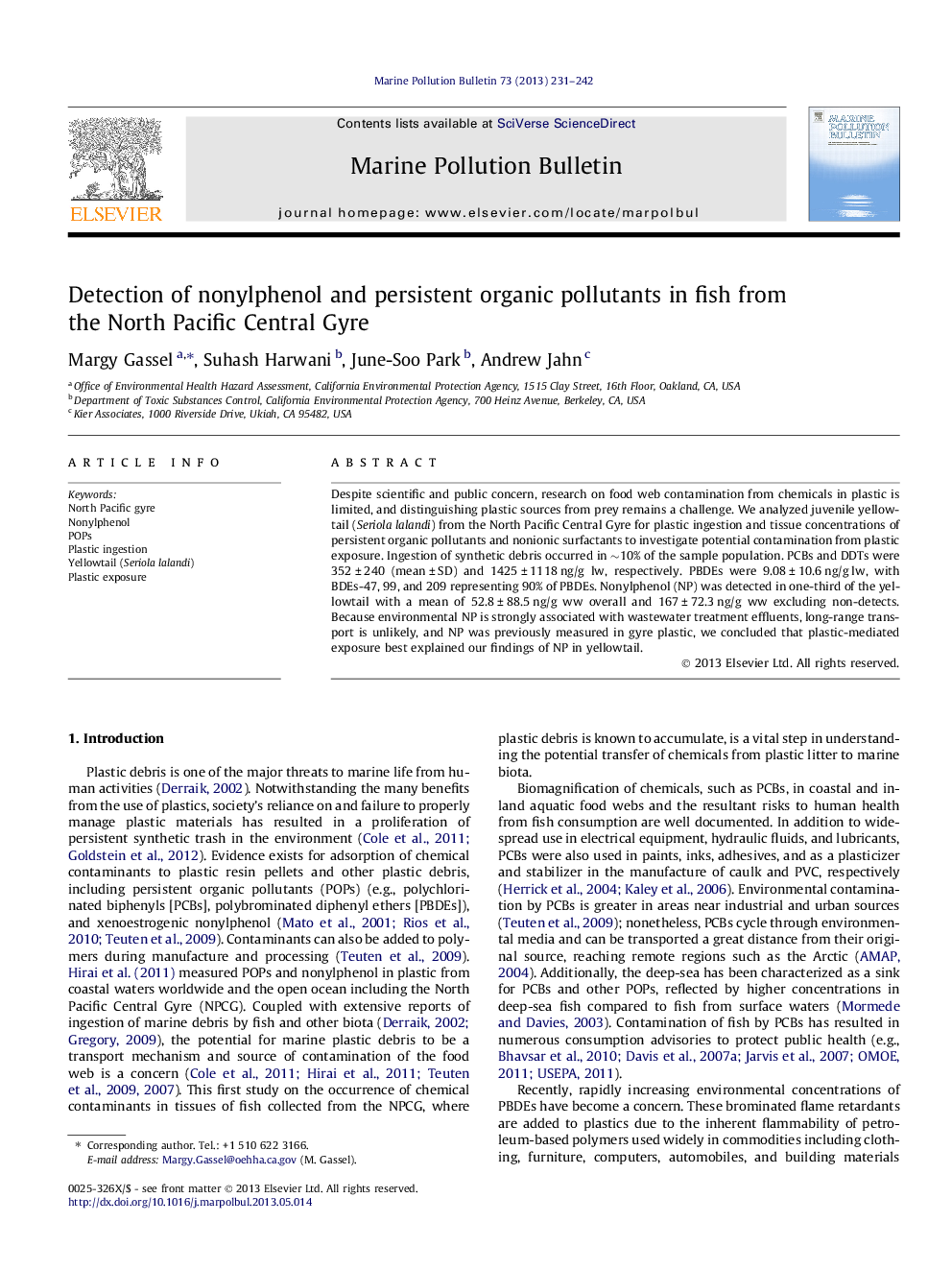| Article ID | Journal | Published Year | Pages | File Type |
|---|---|---|---|---|
| 6359444 | Marine Pollution Bulletin | 2013 | 12 Pages |
â¢We detected PBDEs, PCBs, and pesticides in young yellowtail from the N. Pacific Gyre.â¢10.5% of the sample population ingested synthetic debris.â¢BDE-209 concentrations suggested recent, local exposure, possibly from plastic debris.â¢We found nonylphenol in yellowtail at levels similar to fish near known sources.â¢We concluded plastic is the most plausible source of nonylphenol in yellowtail.
Despite scientific and public concern, research on food web contamination from chemicals in plastic is limited, and distinguishing plastic sources from prey remains a challenge. We analyzed juvenile yellowtail (Seriola lalandi) from the North Pacific Central Gyre for plastic ingestion and tissue concentrations of persistent organic pollutants and nonionic surfactants to investigate potential contamination from plastic exposure. Ingestion of synthetic debris occurred in â¼10% of the sample population. PCBs and DDTs were 352 ± 240 (mean ± SD) and 1425 ± 1118 ng/g lw, respectively. PBDEs were 9.08 ± 10.6 ng/g lw, with BDEs-47, 99, and 209 representing 90% of PBDEs. Nonylphenol (NP) was detected in one-third of the yellowtail with a mean of 52.8 ± 88.5 ng/g ww overall and 167 ± 72.3 ng/g ww excluding non-detects. Because environmental NP is strongly associated with wastewater treatment effluents, long-range transport is unlikely, and NP was previously measured in gyre plastic, we concluded that plastic-mediated exposure best explained our findings of NP in yellowtail.
